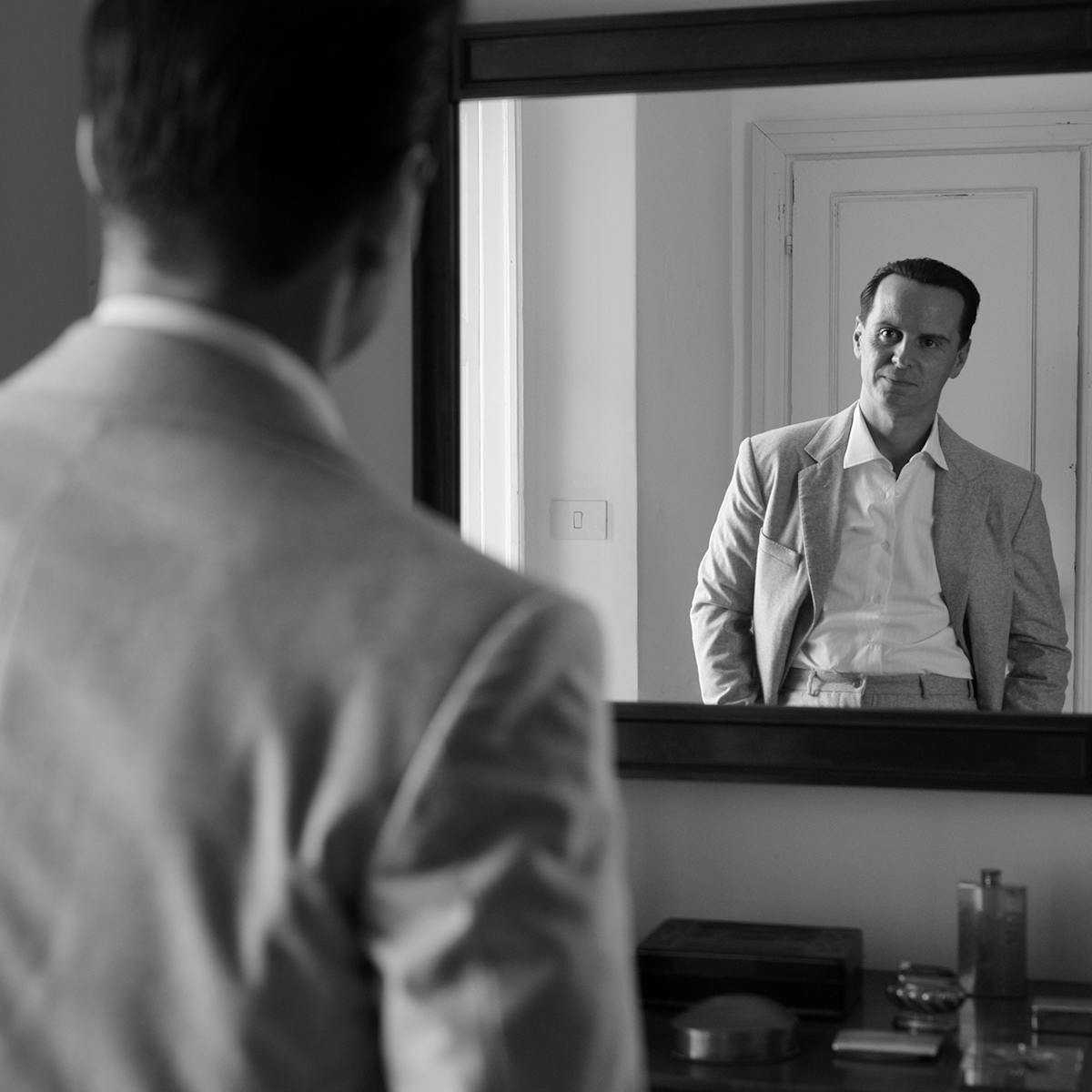Steven Zaillian on setting the book in motion.
Patricia Highsmith constructed her thrillers with a race car driver’s precision: all steely propulsion, with no unnecessary drag. The Texas-born author’s works have been the basis for movie classics such as Strangers on a Train and Carol, yet her lauded 1955 novel The Talented Mr. Ripley — and its title character, the protagonist of four subsequent Highsmith books — sunk its claws into the cultural consciousness unlike any other. While previous adaptations have swooned in the candy-colored aesthetic of an endless summer gone sour on Italy’s Amalfi Coast, the latest take on Highsmith’s Tom Ripley, Steven Zaillian’s eight-part series Ripley, is several shades darker. “I never saw it as some sunny colorful postcard of a story,” says the creator and executive producer, “but rather as the foreboding suspense story that it is.”
Filmed in lush monochrome, Zaillian’s Ripley stars Andrew Scott as Ripley, a con man who talks his way into a free trip to Italy to convince a wayward shipbuilding heir to return home. Hewing closely to Highsmith’s text, this Ripley is a far cry from Matt Damon’s bumbling grifter in The Talented Mr. Ripley and Alain Delon’s smooth seducer in Purple Noon. Scott plays the scammer as parasitic, devious, and — as shown in a skin-crawling scene where he spies on Dickie (Johnny Flynn) and his partner Marge (Dakota Fanning) in their bedroom — lacking the capacity for decency and shame.
Ripley follows Zaillian’s Emmy-nominated The Night Of (2016), as well as a rich career in screenwriting that includes an Oscar for Schindler’s List and Oscar nominations for his work on Gangs of New York, Moneyball, Awakenings, and The Irishman. With Ripley, the writer-director imbues the scope and cinematic swoop of his celebrated film work into a complex psychological portrait and a timely exploration of the art of the con.
Zaillian opened up about his singular vision and the process of adapting Highsmith’s novel for Queue.

A sketch of Dickie's (Johnny Flynn) signet ring — on somebody else's hand
ON PATRICIA HIGHSMITH'S NOVEL
I’ve been a fan of Patricia Highsmith’s books for a long time. When the chance came to tell the first Ripley novel in long-form, rather than just the two hours of a feature, I took it. I felt I could get closer to the rhythms of her tale and Tom’s character this way. She sometimes describes events in real time and in great detail, which is quite effective in linking us to Tom Ripley and somehow making us complicit in his crimes, and the longer form allowed me to do this visually.

A sketch of a pile of passports
ON CASTING ANDREW SCOTT AS RIPLEY
He has the range to play the many personas of Ripley over the course of the story, beginning as a petty criminal who feels he deserves better than his meager circumstances [and becoming] someone who can be whatever he needs to be in order to improve that condition. At one point he says he’s not one of those people who takes advantage of people. But he’d also tell you he doesn’t lie, which is just as untrue.

A sketch of Dickie's (Johnny Flynn) art
ON BRINGING 1960s ITALY TO LIFE ONSCREEN
Early on, we drove the length of the Amalfi Coast, from Salerno to Sorrento, looking for the town we imagined Dickie Greenleaf settled in. Most have been too modernized for a story taking place in 1960, but there was one we came upon — a village of about 800 people called Atrani — that we found to be perfect. This was a huge job for wardrobe, not only in terms of the sheer number of characters and extras to be dressed in 1960s period clothes, but also because we wanted to be accurate to the different regions of Italy the story takes place in. From the feel of la dolce vita in Rome to a more working-class wardrobe in Palermo or Atrani, it’s always accurate.

A sketch of an ashtray, poised in a tense standoff
ON SHOOTING THE SERIES IN BLACK AND WHITE
I always imagined this story in black and white when I first read the book and throughout the time I was writing the scripts. It takes place in the winter of 1960 and, like many of Highsmith’s stories, has a film noir quality to it.
ON THE ENDURING APPEAL OF TOM RIPLEY
Con artists and narcissists aren’t going anywhere. They’re with us now and always have been. Why do they fascinate us? Maybe because we enjoy the feeling of relief when we don’t fall prey to them. Maybe because there are parts of them in us, so we relate. At the very least, we can be fascinated by their ingenuity. One couldn’t get away with Ripley’s particular schemes today, but there’s still no shortage of larcenists, embezzlers, identity thieves, and other similar racketeers — perhaps even more now. While they may be immoral or amoral, practitioners like Tom Ripley are not without talent.




